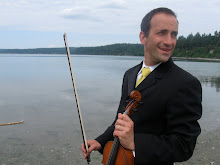Dear Parents,
When we meet together at a parent & teacher conference in the coming weeks or in the spring time, we will create a picture of your child at school, and I will try to answer any questions you may have. It sometimes help if you let me know your questions or interests before the conference. To aid in this process, the early childhood teachers have created this conference preparation form to fill out and return to me (either by email or in writing).
Although I do a lot of work with children in class to help work toward an inclusive social environment (I don't expect children to be artificially kind to every child in the class or for peace to permeate every moment of every day; but I am still working to foster the generosity of spirit present in the children), and although sometimes parents and I do create goals to assist in this process (e.g., 2 children seem to be always battling, and parents and I might together agree that more or less or different time together outside of school may or may not be helpful), I have found myself over the years refraining from making the conference a time in which we create goals or lots of things to work on as a teacher might with an older child. When our children are ages 2 to 4, there is so much that will evolve and change as the children grow, that being quietly strong, clear, and patient is the most helpful course of action. There are, of course, times when we can help young children with healing activities (and often teachers share these activities with all children or all families because all children benefit), and we need to be awake to the possibility of other sorts of help needed in the early years. We also, however, want to allow our children time to develop their senses of autonomy, initiative, and industry.
Speech development, for example, happens at different rates for different children. When I was first becoming an early childhood teacher, I found this article about stuttering extremely helpful. It is old. It may well be that a current speech pathologist might refute some of the research. All the same, the general message of the article--that child development is not a smooth path of ostensible perfection but has its normal deviations along the way--obtains not just in speech development but in many areas of child development. In speech, for example, the researchers found no difference in the speech patterns (e.g., repetitions, pauses, and the like) of 3 to 4 year olds considered to be stutterers compared to 3 to 4 year olds not considered to be stutterers; it was found to be fairly normal for children, as their speech developed, to struggle to put ideas into words fluently. What caused a pattern of stuttering to persist, however, was when caregivers or parents became concerned and considered these normal hiccups in speech to be a problem. The diagnosis of stuttering was found to be the cause of stuttering. I recommend reading the article to see how the author presents his research and develops his argument.
Again, I use this idea also as a metaphor for other areas of development. While I do intervene quickly in social issues (because other children become involved and, I believe, long term habits of relating to each other become established), in many other ways, I prefer to create a stable and artistic environment, and to be mindful and observe, and share my picture with parents--without any sort of solution or prescription or recommendation or judgment. Thank you for your support of this approach.
With warmth and light,
William Geoffrey Dolde
p.s. I have experienced with one of my sons the question of stuttering--when his speech began to quickly develop, he paused and repeated sounds quite a lot. Some other adults noticed. Some even gave me and my wife various links to medical services that would be available--indeed, there are times for early intervention, and that was the drift of some of these sources. We chose to have faith in development and the article--his speech and mental pictures were developing so rapidly, it seemed to me, that it was hard for his speech organs to keep up. Touch wood, the patient model seems to have work; over a period of months, the normal repetitions of his speech evolved into normal speech for an almost 3 year old.
Monday, November 9, 2009
Subscribe to:
Post Comments (Atom)


No comments:
Post a Comment